Loch flies
{{start}}
Loch Style fly-fishing involves fly-fishing from a boat, side onto the wind, using a system incorporating one or a number of flies. There are both wet and dry lock style fishing techniques. There are four distinct sub sections of loch flies: wake or bob flies, dropper flies that can be placed in various position s in a team of flies for different effects, attractor flies which are generally fished on a middle dropper and point flies.
The dry fly technique involves casting out in the direction of the drift, stopping the cast above the water so as to let the team of flies settle, waiting the desired time (often only 5 to 10 seconds) and then repeating the process in a slightly different position. Dry fly Loch style fly fishing covers a lot of water in a short time. The flies used are ordinary dry flies such as those shown in the dry fly page of this website. When selecting a team of flies try to balance the selection so that the most aerodynamic fly is on the point and the least aerodynamic fly is on the top dropper.
The wet technique involves casting out in the direction of the drift, fishing the flies using a range of techniques. Wet fly loch fly fishing, as well as incorporating a range of different retrieves and fly lines ranging from floating right through to very fast sinking lines can also involve fishing: the drop, the retrieve, the stop, the lift, the hang and the dibble and the dapple.
{{end}}

{{+1}}Dunkeld – hackled as in original{{-1}}
{{start}}
It was the summer of 2000 that I first became involved on English style Loch Style fly fishing and slowly I accumulated an arsenal of techniques and flies. I really enjoy tying flies and so as I have seen various patterns I have tied them and tried them. Most have been discarded and just a few have won a place in my Loch Style fly box - this is one of the keepers. Although I have never seen a natural of these colours this fly is one of my top dropper favorite flies.{{end}}
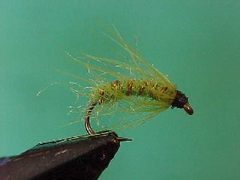
{{+1}}Fuzzy spiders – Chatto’s original{{-1}}
{{start}}
There is almost no limit to the combinations that you can come up with and these are the ones that I regularly fish and you may like to try. I don't know if fish pick them up as emerging insects but they do fish well when fish have emergers on the menu.{{end}}
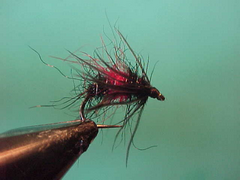
{{+1}}Bibio variant{{-1}}
{{start}}
Whilst the Bibio fly may have been originally designed as a blow fly representation it has found its place as a great top dropper fly in lakes where fish are midge feeders. That of course begs the question do fish take them as midges, or do they take them as some other insect more like a fly, but which spends part of its life cycle in the water, that just happens to hatch as the same time as a midge?{{end}}
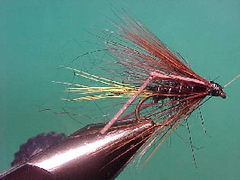
{{+1}}Leggy wake flies – Chatto’s variant{{-1}}
{{start}}
The beauty of this fly is that once tied with legs if on the day if you decide you want a fly without kegs its easy to snip the legs off. It's also versatile enough, witha little dry fly dressing, to be dry fly. My favourite dressings are blae and black, mallard and claret, green peter and Kate McLaren.{{end}}
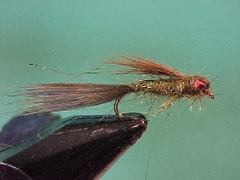
{{+1}}Damsel – Chatto’s MK1{{-1}}
{{start}}
There are over 100 different species of Damselflies in Australia and the lava which are usually slender with three terminal gills, that present as tails, form a significant part of a trout's diet. Their bodies have around 10 segments, they have 6 legs and they often have emerging wings. Most appear to be shades of yellow / olive and brown / yellow with some being quite dark and others quite pale.{{end}}

{{+1}}Kalkite special{{-1}}
{{start}}
This fly has stood the test of time and has been on this web site since 2005. Over the last 10 or so years it has been my 'go to' fly when fishing to sighted fish or prospecting the shores of Lake Jindabyne particularly around our home village of Kalkite.{{end}}
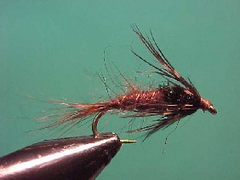
{{+1}}Cruncher{{-1}}
{{start}}
When it all boils down the "Cruncher" isn't that different to so many nymphs that you see but it does have a trigger point in the form of the front hackle and of course as you would expect it does catch fish. I tend to carry it only in size 10 and size 12 and use it when a big buggy nymph is called for in river fishing, loch style fishing or even when polaroiding.{{end}}
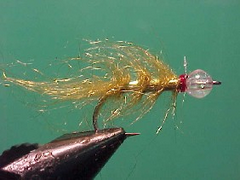
{{+1}}Salty BMS{{-1}}
{{start}}
This is a inexpensive fly to tie that works well on bream as a specific targeted species or as a second fly fished about a meter above a say a mud prawn or estuary fly.{{end}}
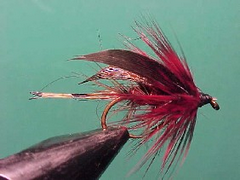
{{+1}}Mallard and claret{{-1}}
{{start}}
Whilst it has been tweaked at the edges a little this Mallard & Claret pattern remains remarkably similar to the original fly pattern that has its origins in England some 500 odd years ago. In contemporary Australia whist still popular as a wet pattern for stream fishing it is also one of my favorite top dropper or "Bob" fly for lock style fishing.{{end}}

{{+1}}Soft hackle winged bob flies – Chatto’s version{{-1}}
{{start}}
Whilst it has been tweaked at the edges a little this Mallard & Claret pattern remains remarkably similar to the original fly pattern that has its origins in England some 500 odd years ago except for the introduction of a fuzzeled body rather than a hackled body and a soft wing instead of feather slip wings. I carry both the mallard and claret and an olive version of this fly in my lake fly box.{{end}}













